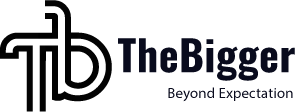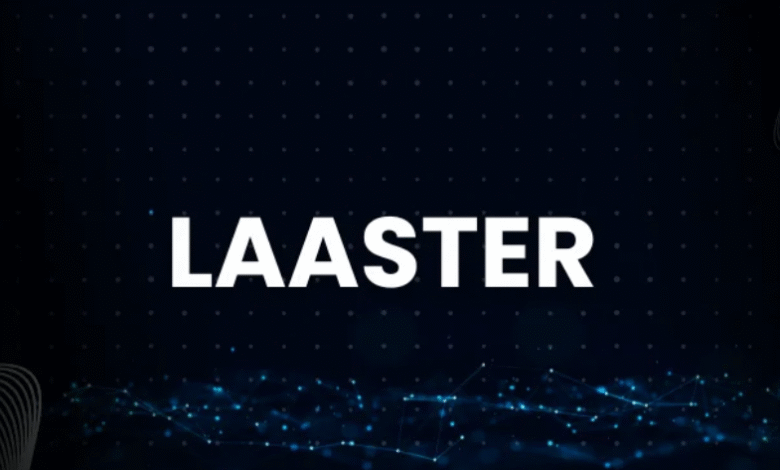Project management has always been a complex puzzle, demanding precision and coordination from teams. With the rise of technology, it’s essential to adapt our methods to meet modern challenges. Enter Laaster—a revolutionary platform designed to transform how we manage projects. By integrating innovative features with user-friendly design, Laaster is not just another tool; it’s a game-changer in the industry.
In an era where flexibility and efficiency are crucial, Laaster offers a fresh perspective on project management solutions. Its unique approach helps teams streamline their processes while keeping everyone aligned and focused on objectives. Let’s dive deeper into this transformative platform and explore what makes Laaster stand out in today’s fast-paced business environment.
The traditional approach to project management
The traditional approach to project management often revolves around rigid structures and linear processes. Teams rely heavily on detailed planning, established timelines, and sequential task execution.
This method typically involves extensive documentation, where every step is mapped out in advance. Stakeholders are expected to adhere strictly to the initial plan. Deviations or changes can disrupt the entire workflow.
Communication tends to be formal and hierarchical. Information flows from top-down rather than encouraging collaboration among team members. This can lead to misunderstandings or delays in response time.
Moreover, performance metrics focus mainly on adherence to schedules and budgets rather than overall project quality or innovation. Flexibility is often sacrificed for control, causing frustration among teams striving for creativity within confined parameters.
As a result, many organizations find themselves struggling with inefficiencies that hinder progress and adaptability in an ever-evolving business landscape.
The shortcomings of the traditional approach
Traditional project management often relies on rigid structures and linear processes. Teams follow a set plan without much room for flexibility. This can stifle creativity and adaptability, especially in fast-paced environments.
Communication within traditional frameworks can also be problematic. With multiple layers of hierarchy, important information might get lost or delayed. This leads to misunderstandings that derail projects.
Moreover, resource allocation tends to be inefficient. Teams may waste time on tasks that don’t align with the project’s ultimate goals. The lack of real-time insights makes it difficult to pivot when challenges arise.
Stakeholder engagement suffers under old paradigms. Feedback loops are slow, leaving team members disconnected from client needs and expectations. Such shortcomings leave companies vulnerable in an ever-evolving market landscape.
How Laaster addresses these shortcomings
Laaster revolutionizes project management by leveraging cutting-edge technology to tackle the limitations of traditional methods. Its intuitive interface streamlines collaboration, allowing teams to connect seamlessly regardless of their location.
The platform provides real-time updates and analytics, ensuring everyone stays informed on project progress. This transparency minimizes misunderstandings and miscommunication often seen in conventional approaches.
Automated task assignments reduce the burden on managers, enabling them to focus on strategic decisions rather than micromanaging daily activities. Laaster’s integration capabilities with existing tools further enhance its usability, making it easy for organizations to adopt without disrupting workflows.
Additionally, Laaster emphasizes adaptability through customizable features that cater specifically to each project’s unique needs. This flexibility empowers teams to pivot quickly when challenges arise—something traditional methods struggle with effectively.
Key benefits of using Laaster for project management
Laaster is reshaping project management with its innovative features. One standout benefit is real-time collaboration. Team members can interact seamlessly, ensuring that everyone stays on the same page.
Another advantage lies in task automation. Laaster reduces manual work by automating routine tasks, which frees up valuable time for teams to focus on strategic initiatives.
The platform’s intuitive interface makes it easy for users to adapt quickly. This user-friendly design minimizes the learning curve and enhances productivity from day one.
Additionally, Laaster offers robust analytics tools. These insights help managers track progress and identify areas for improvement effectively.
With customizable workflows, Laaster caters to diverse project needs. Teams can tailor their processes without feeling constrained by rigid structures.
These benefits combine to create a more efficient project management experience that drives results while fostering teamwork and innovation.
Success stories of companies using Laaster
Many companies are experiencing transformative results with Laaster. Take, for instance, a tech startup that struggled with scattered communication and missed deadlines. After implementing Laaster, their project timelines became clearer, allowing teams to collaborate seamlessly.
Another remarkable case is an established marketing agency that thrived on creativity but faced workflow bottlenecks. With Laaster’s intuitive interface, they streamlined their processes and boosted productivity by over 30%.
Even in the nonprofit sector, organizations are leveraging Laaster to enhance volunteer coordination. They can now manage projects effectively without overwhelming team members.
These success stories highlight how diverse industries benefit from adopting this innovative tool. Each company has found a unique way to unlock potential and foster collaboration through Laaster’s features.
Conclusion: The future of project management with Laaster
The future of project management is rapidly evolving, and Laaster is at the forefront of this transformation. By integrating advanced technology with user-friendly design, it streamlines processes that were once cumbersome and time-consuming.
As organizations increasingly embrace remote work and collaborative environments, the need for a dynamic tool like Laaster becomes even more apparent. It not only enhances communication among team members but also fosters transparency in project tracking.
With features tailored to address common pain points in project management, such as task delegation and deadline monitoring, Laaster empowers teams to operate more efficiently. Its adaptability means it can grow alongside your projects and organization’s needs.
Success stories from companies that have adopted Laaster highlight its capacity to improve productivity significantly while reducing stress associated with traditional methods. The feedback underscores how this innovative platform has become indispensable for many businesses aiming for excellence.
Embracing tools like Laaster signals a shift towards a more integrated approach in managing projects—one that values flexibility, collaboration, and results-driven strategies. As we look ahead, it’s clear that platforms like this will play an essential role in shaping effective project management practices across industries worldwide.

